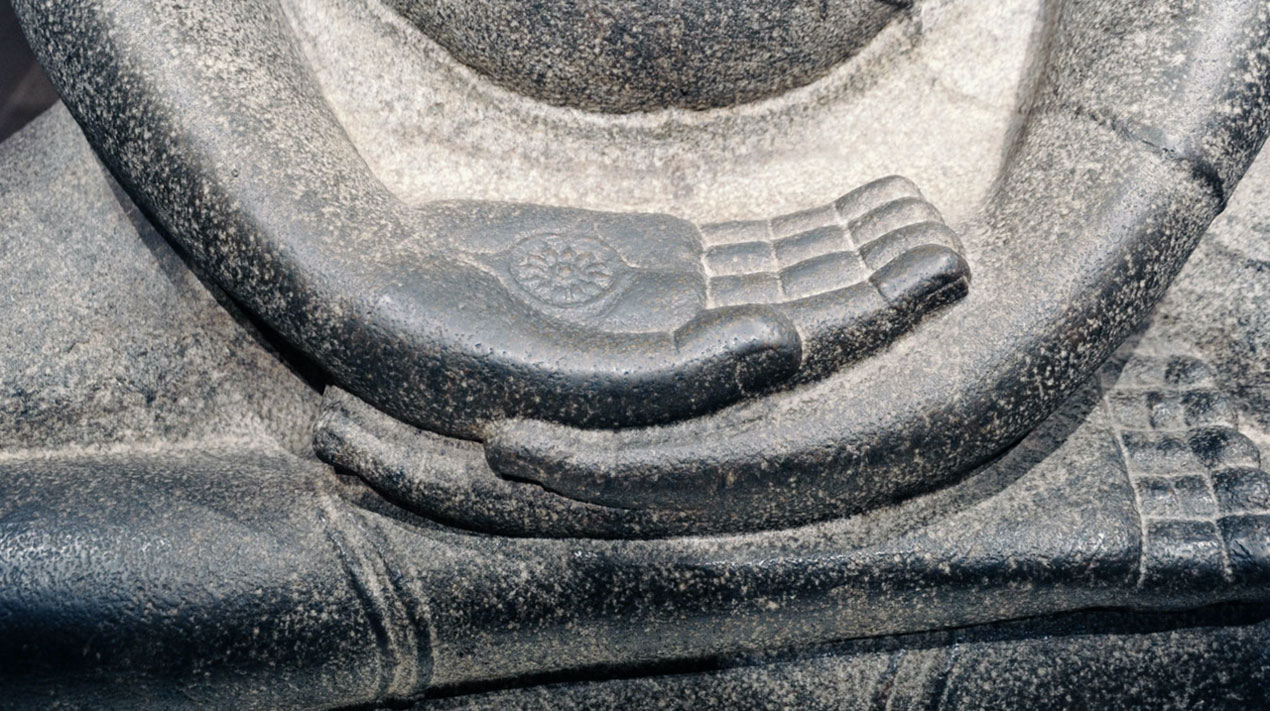What are the four noble truths?

A Dharma Wheel engraved on the hand of a Buddha sculpture. | Source: The Art Institute of Chicago, via Unsplash
In his 45-year career crisscrossing the Ganges Plain in northern India, the Buddha gave a wealth of profound teachings. But underlying them all were the four noble truths:
- There is suffering.
- There is a cause of suffering.
- There is an end to suffering.
- The way out is the eightfold path.
The Buddha is said to have realized these fundamental truths on the night of his great awakening. But fearing they were too far removed from ordinary experience for others to understand, he decided to keep them to himself. Legend has it, however, that the god Brahma Sahampati intervened, convincing the Buddha he must pass on what he’d learned. So the Buddha tracked down his former meditation companions, the five ascetics, who were residing in the Deer Park near Benares. In what is known as his first sermon, the Buddha taught them the four noble truths. The ascetics are said to have been enlightened on the spot.
The first noble truth—there is suffering (dukkha in Pali and Sanskrit)—isn’t pessimistic, as is often believed, but realistic, according to the Theravada Buddhist monk and scholar Walpola Rahula. The Buddha didn’t mean that ordinary life is nothing but misery—of course there’s sukkha, or happiness, he said. It’s just that even happy moments are ultimately unsatisfying, because everything changes. Good, bad or indifferent, nothing lasts. Impermanence (anicca), like dukkha, is one of the three inescapable facts of existence. We all, without exception, are subject to aging, sickness, and death. Even the self isn’t fixed or enduring: anatta (no-self) is the third mark of existence. Trying to get what we want and hang onto what we have while avoiding or rejecting what we don’t want inevitably leads to disappointment. Ignorance of this reality is the root cause of suffering, the second noble truth tells us.
The third noble truth—that there is an end to suffering—is the saving grace. Pain and dissatisfaction are not all there is. Just as suffering is the human condition, so too is the possibility of an end to suffering.The fourth noble truth—the eightfold path—spells out practical action we can take toward our own awakening and freedom from the suffering of samsaric life. The eightfold path guides us in living ethically, training the mind, and cultivating wisdom.
Why are these truths “noble”? Explanations vary. Some scholars hold that the four noble truths are the teachings that elevated or “ennobled” Siddhartha Gautama by liberating him from samsaric existence. Similarly, they can liberate us.

Tricycle is more than a magazine
Gain access to the best in sprititual film, our growing collection of e-books, and monthly talks, plus our 25-year archive
Subscribe now